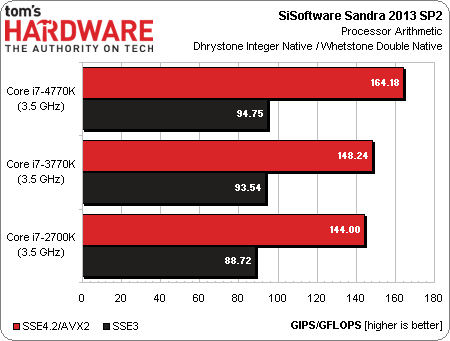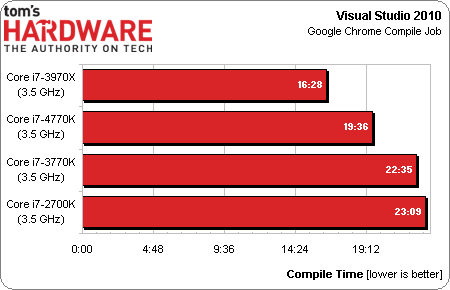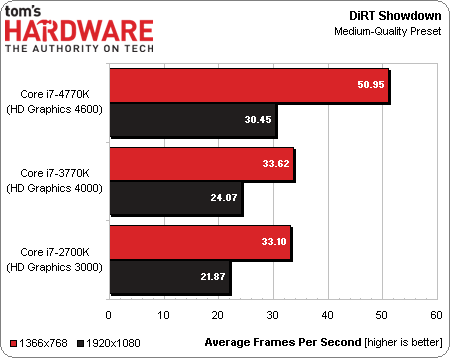If you’re considering upgrading to a Haswell CPU or building an entirely new system built around the chip but have been holding out to see what performance is like compared to existing processors, today is your lucky day. That’s because the first round of benchmarks from Haswell have hit the web courtesy of Tom’s Hardware.
The publication was able to get their hands on a Core i7-4770K which will replace the i7-3770K at the top of the chip maker’s food chain (excluding Sandy Bridge-E). The chip retains the same base / Turbo clock speeds, core count (4/8) and 8MB of L3 cache as the Ivy Bridge counterpart. The only exception is the GPU clock which has been bumped up by 100MHz.

Despite the fact that the publication’s test platform was running with 17 percent less memory bandwidth, Haswell was generally able to outpace similar Ivy Bridge chips by seven to 13 percent. These are pretty respectable gains considering clock speeds haven’t increase. In other tests, like Sandra’s Multimedia benchmark, integer performance was nearly double what Ivy Bridge was capable of.

Onboard graphics also gained an improvement over Intel’s previous best. The site recorded frame rates that were on average 12-52 percent higher depending on the resolution and the game. Unfortunately the site falls short of testing overclocking capabilities or recording power consumption.

Intel’s next generation processor is still a few months out but it’s nice to get an idea of what sort of performance Haswell will carry with it when it does arrive. We fully expect final production silicon to perform even better than what Tom’s Hardware recorded with this pre-production sample.
https://www.techspot.com/news/51986-intels-core-i7-4770k-haswell-cpu-gets-benchmarked.html
